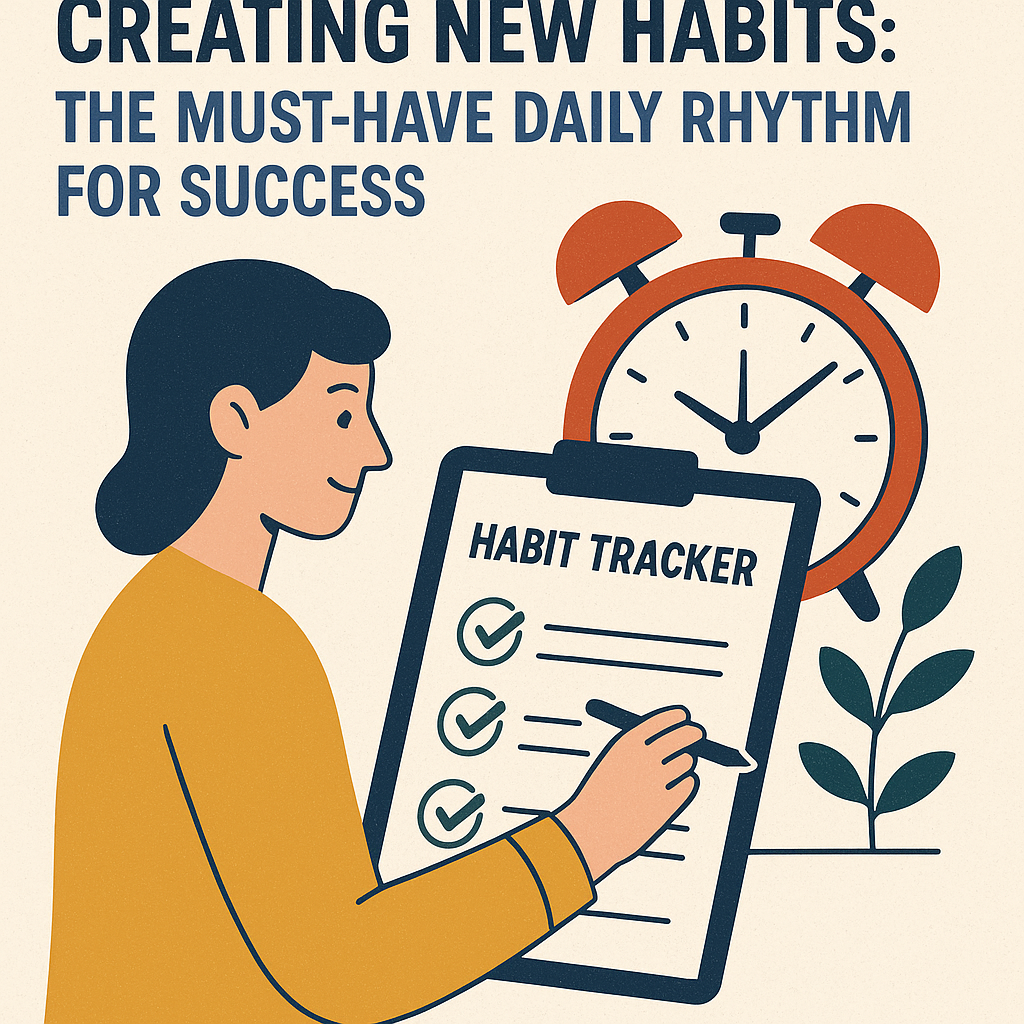Creating New Habits: The Must-Have Daily Rhythm for Success
Creating new habits requires a daily rhythm that fosters consistency, awareness, and gradual progress. Whether you’re trying to adopt a healthier lifestyle, learn a new skill, or enhance productivity, the foundation is almost always the same: building a pattern of regular, intentional actions. Without a steady rhythm, new behaviors tend to fall by the wayside, overwhelmed by distractions or sheer inertia. This article explores why establishing a daily rhythm is essential for habit formation and offers practical strategies to cultivate that rhythm effectively.
Understanding the Role of Daily Rhythm in Habit Formation

At the heart of habit creation lies repetition. Habits are formed when our brains recognize and automate a pattern of behavior in response to certain cues or environments. This process, known as habit stacking or chaining, thrives on stability—doing something consistently at roughly the same time every day strengthens the neural pathways required to cement the habit.
A daily rhythm provides both structure and predictability. When your day is divided into well-defined segments—morning, afternoon, evening—with designated times for particular tasks, you reduce the cognitive effort of decision-making. This frees up mental energy for deeper focus and helps you avoid the common pitfall of procrastination.
For example, shifting your workout from an “I’ll do it whenever” mindset to a scheduled 7 AM session creates an external anchor. Over time, your body and mind start associating that part of the day with exercise, making it increasingly easier to transition into the habit.
The Science Behind Routine and Habit
Neuroscience research shows that habits engage a part of the brain called the basal ganglia, which stores patterns of behavior. When you introduce a consistent daily rhythm, neural activity shifts from the more conscious decision-making areas (like the prefrontal cortex) to this more automated process. This shift explains why habits eventually require less willpower to maintain and become almost automatic.
Moreover, habits linked to a regular rhythm benefit from environmental cues that reinforce behavior. For instance, brushing your teeth after breakfast is easier to maintain than doing it randomly because it happens in a natural, repeated sequence.
How to Establish a Daily Rhythm to Support New Habits
1. Start Small and Stay Consistent
Trying to reinvent your entire lifestyle overnight is a recipe for burnout. Instead, pick one or two manageable behaviors and anchor them to existing routines. If you want to read more, try dedicating 10 minutes after lunch to dive into a book rather than aiming for an hour of reading immediately.
2. Use Time Blocks and Alarms
Scheduling your new habit into specific time blocks creates a reliable framework. Setting alarms or calendar reminders can initially act as external prompts, gradually replaced by internal cues as the habit consolidates.
3. Align Your Rhythm with Your Natural Energy Levels
Everyone has times during the day when they feel most alert or motivated. Identify these peaks and schedule your most challenging new habits accordingly. For example, if you’re a morning person, that might be the best time to write, meditate, or exercise.
4. Combine Habits to Build Momentum
Habit stacking—linking a new habit to an established one—is a powerful method. If you brush your teeth every morning, follow that immediately with a five-minute journaling session. Eventually, these linked behaviors form a chain that’s easier to maintain.
5. Be Flexible and Forgive Yourself
While consistency is critical, rigidity can be counterproductive. Life will throw curveballs, and some days the rhythm may be off. What matters is maintaining a gentle commitment to return to your habit rather than perfection.
Overcoming Common Challenges When Creating Habits
Creating a new routine isn’t always straightforward. Often, the biggest hurdle is getting started or dealing with setbacks. Focusing too much on willpower leads to exhaustion, while skipping days causes loss of momentum.
Here, the daily rhythm serves as a reliable backbone. When your actions are embedded in a predictable cycle, you rely less on motivation and more on established patterns. Over time, the repeated behavior becomes less a task and more a natural part of your day.
Another challenge is external distractions or competing priorities. An intentional rhythm allows you to “block off” time in your day for new habits, reducing interference and highlighting their importance.
Conclusion
Creating new habits requires a daily rhythm because patterns become easier to follow and sustain when embedded in a consistent routine. This rhythm reduces mental friction, leverages neural automation, and aligns efforts with your natural energy flow. Whether you’re developing a fitness habit, improving your diet, or committing to daily learning, establishing a reliable rhythm is key to making lasting changes. By starting small, scheduling strategically, and remaining adaptable, you can transform new behaviors from fleeting intentions into enduring parts of your daily life.






